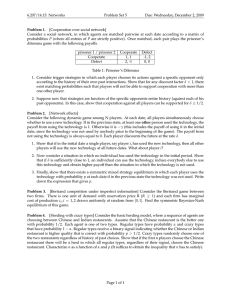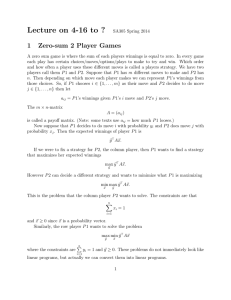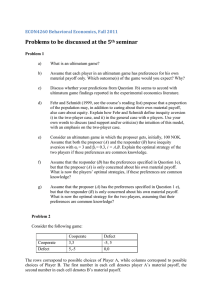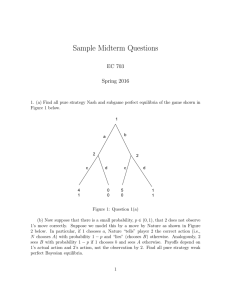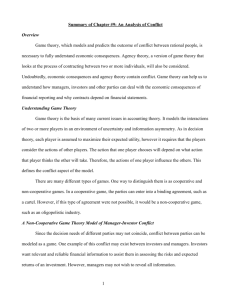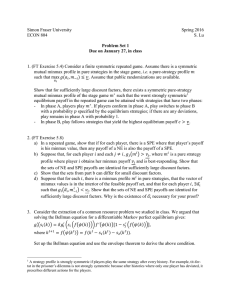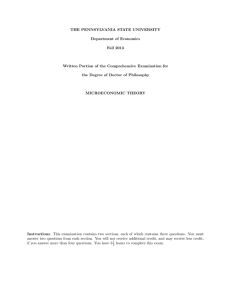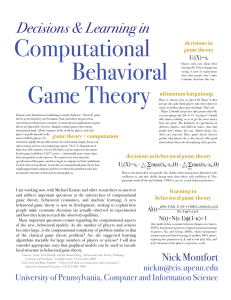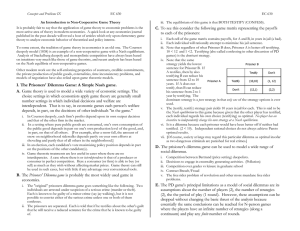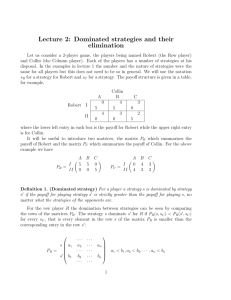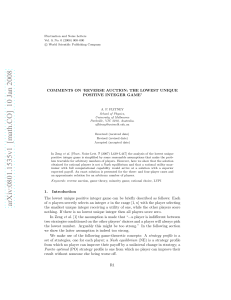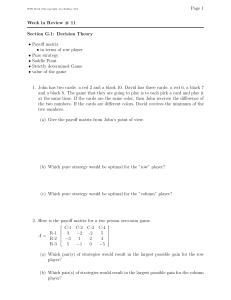The QT interval on the ECG is measured from the beginning of the
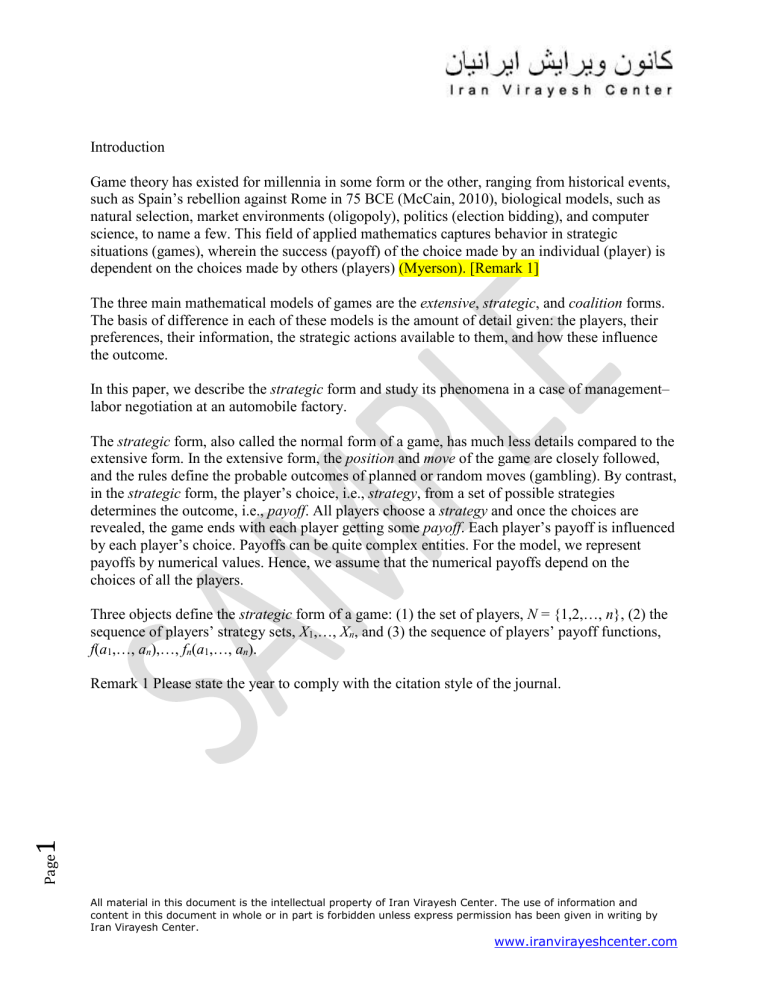
Introduction
Game theory has existed for millennia in some form or the other, ranging from historical events, such as Spain’s rebellion against Rome in 75 BCE (McCain, 2010), biological models, such as natural selection, market environments (oligopoly), politics (election bidding), and computer science, to name a few. This field of applied mathematics captures behavior in strategic situations (games), wherein the success (payoff) of the choice made by an individual (player) is dependent on the choices made by others (players) (Myerson). [Remark 1]
The three main mathematical models of games are the extensive , strategic , and coalition forms.
The basis of difference in each of these models is the amount of detail given: the players, their preferences, their information, the strategic actions available to them, and how these influence the outcome.
In this paper, we describe the strategic form and study its phenomena in a case of management– labor negotiation at an automobile factory.
The strategic form, also called the normal form of a game, has much less details compared to the extensive form. In the extensive form, the position and move of the game are closely followed, and the rules define the probable outcomes of planned or random moves (gambling). By contrast, in the strategic form, the player’s choice, i.e., strategy , from a set of possible strategies determines the outcome, i.e., payoff . All players choose a strategy and once the choices are revealed, the game ends with each player getting some payoff . Each player’s payoff is influenced by each player’s choice. Payoffs can be quite complex entities. For the model, we represent payoffs by numerical values. Hence, we assume that the numerical payoffs depend on the choices of all the players.
Three objects define the strategic form of a game: (1) the set of players, N = {1,2,…, n }, (2) the sequence of players’ strategy sets,
X
1
,…,
X n f ( a
1
,…, a n
),…, f n
( a
1
,…, a n
).
, and (3) the sequence of players’ payoff functions,
Remark 1 Please state the year to comply with the citation style of the journal.
All material in this document is the intellectual property of Iran Virayesh Center. The use of information and content in this document in whole or in part is forbidden unless express permission has been given in writing by
Iran Virayesh Center. www.iranvirayeshcenter.com

